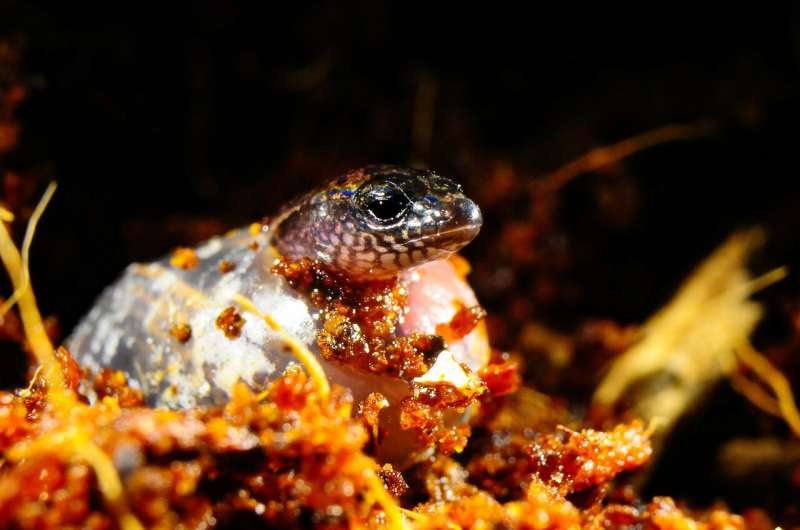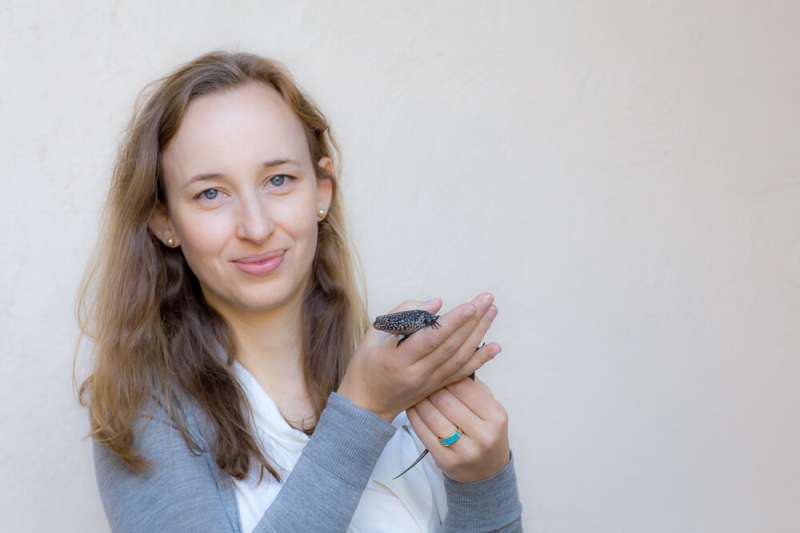Which came first, the lizard or the egg?

In a world first, researchers at the University of Sydney have observed a normally live-bearing Australian lizard lay three eggs and then weeks later, give birth to a live baby from the same pregnancy. This is the first time such an event has been documented in a single litter of vertebrate babies.
The three-toed skink (Saiphos equalis) is one of only a handful of rare "bimodally reproductive" species, in which some individuals lay eggs and others give birth to live babies. But up until now, no vertebrate has ever been observed to do both in one litter.
"It is a very unusual discovery," said Dr. Camilla Whittington, from the School of Life and Environmental Sciences and Sydney School of Veterinary Science at the University of Sydney.
The three-toed skink is native to the east coast of Australia. In the northern highlands of New South Wales the animals normally give birth to live young, but those living in and around Sydney lay eggs.
"We were studying the genetics of these skinks when we noticed one of the live-bearing females lay three eggs," Dr. Whittington said. "Several weeks later she gave birth to another baby. Seeing that baby was a very exciting moment!"
The observation will be published in Biology Letters this week, along with advanced microscopy of the egg-coverings.
There are at least 150 evolutionary transitions from egg-laying to live-bearing in vertebrates said Dr. Whittington, who led the study alongside Dr. Melanie Laird, a postdoctoral researcher at the University of Otago, and Emeritus Professor Mike Thompson.

"The earliest vertebrates were egg-layers, but over thousands of years, developing embryos in some species were held inside the body for longer, until some animals began to give live birth. People mostly think about humans and other mammals giving birth. But there are many species of reptile that give birth, too."
Dr. Whittington said that the unusual observation of both egg laying and live birth in a single litter shows that the three-toed skink is an ideal model for understanding pregnancy. "It makes Australia one of the best places in the world to study the evolution of live birth, because we can watch evolution in action," she said.
"Put in the context of evolutionary biology, being able to switch between laying eggs and giving live birth could allow animals to hedge their bets according to environmental conditions," Dr. Whittington said.
This observation helps make the three-toed skink, which looks like a baby snake with tiny legs, one of the "weirdest lizards in the world", she said.
Further research into this small lizard, which seems to occupy a grey area between live birth and egg-laying, will help determine how and why species make major reproductive leaps.
More information: Facultative oviparity in a viviparous skink (Saiphos equalis), Biology Letters, royalsocietypublishing.org/doi … .1098/rsbl.2018.0827
Journal information: Biology Letters
Provided by University of Sydney




















